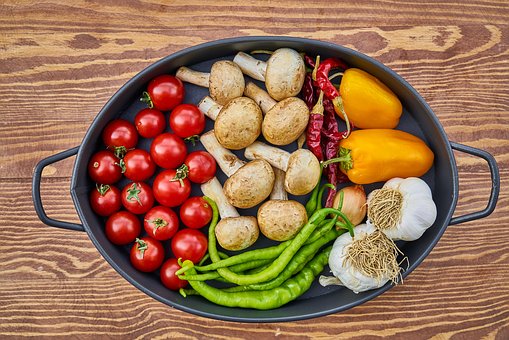
Food Combining For Optimum Nutrition: Food Categories
Posted by SoundHealth on Tuesday, February, 10 2009 and filed under Nutrition
Key topics: Protein • Starch • Vegetables • Pulses

An earlier article introduced the concept of food combining, which follows the basic principle of avoiding foods that don't go well together (in the same meal), for optimum nutritional value and better health.
Foods that are high in protein are not digested well when combined with starchy foods, and starch isn't broken down properly when mixed with protein. This is because protein foods require an acidic stomach, and carbohydrates, or starches, need an alkaline environment. Combining starches and proteins can strain our digestive system and cause digestive discomfort, as well as fermentation, a build-up of gas and toxins.
The Digestive System
Digestion takes place in three main areas of the body: the mouth, the stomach and the small intestine.
The mouth juices are alkaline, so complex carbohydrates like bread, rice and pasta can broken down in the mouth by saliva. Our mouth and tongue are not designed to withstand strong acids; otherwise our teeth would crumble and fall out.
Stomach juices are usually acidic, ranging from neutral to strongly acid, depending on the food that is being eaten. The stomach lining is coated with a protective membrane so that acids attacking food can't digest the stomach itself.
Proteins are broken into smaller bits by the teeth, and moistened by saliva to make swallowing easier, but no protein digestion takes place in the mouth. Instead, when protein reaches the stomach, cells in the stomach wall produce gastric acids, signaling the start of protein breakdown. The stomach is now too acidic for any starch digestion to continue.
Fruit, on the other hand undergoes very little digestion in the mouth or stomach. It requires very little energy and when eaten on its own, it passes quickly and efficiently to the small intestine.
Vegetables and salads
All salads and vegetables, except for potatoes, are versatile and can be combined with either proteins or starches. This is because can be digested in either an acid or alkaline stomach. A healthy diet should consist of a range of vegetables, as they are also a good source of fiber, vitamin, minerals and phytochemicals.
Other foods that go with anything are herbs, spices, seeds, nuts, oils and fats.
Proteins
Proteins mix well with salads and vegetables (apart from potatoes), oils, nuts and seeds. Here are some examples of common foods high in protein:
- Meat and poultry: beef, lamb, chicken
- Dairy products: butter, milk, cheese, yoghurt
- Soya products
- eggs
Starches
Starches also mix well with salads and vegetables, including potatoes, and nuts, seeds and oils. They are foods that tend to be filling
Some common starch-rich foods include:
- Grains: barley, rice, oats, semolina, buckwheat
- Pasta
- Bread: rye bread, rice cakes, oat biscuits, pitta
- Cereals: porridge, muesli, corn, couscous, all types of flour
- Potatoes and sweet potatoes
- All types of lentils, peas and beans (except soya)
Pulses, or legumes are considered as 'low-quality' proteins, but they also contain significant amounts of starch. Therefore they can sometimes be difficult to classify into a food combining group.
Black-eyed, butter, kidney and haricot beans, lentils, chickpeas, peas and most other pulses comprise of two-thirds starch and one-third protein. They can therefore be classed as starches. The only exception is soya beans and peanuts (these are a pulse and not a nut), which consist of more protein than starch.
Sprouted beans are not starchy and are alkaline-forming, so can be classed as vegetables (that go with anything).
Meal-Planning
To plan a good food-combined meal, aim to eat either:
- one protein meal with vegetables or salad
- one starch meal with vegetables or salad
- a fruit only meal
Try to maintain a balance between proteins and starches, and avoid eating too many protein or starch meals in a row. Include vegetables and salads with as many meals as possible.
It is better to leave three or four hours between a protein and starch meal, but if you only eat at regular mealtimes then this gap occurs automatically.
Health, fitness and longevity
Based upon the principles of health
in the Qur'an and Prophetic Traditions.
HealthyMuslim.Com
There are two bounties in which
most people lose out: good health
and free time. Al-Bukhari.